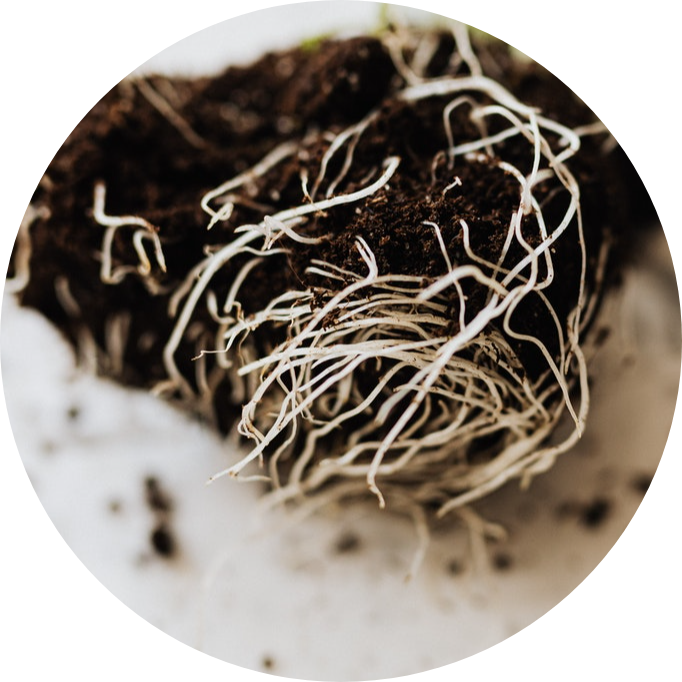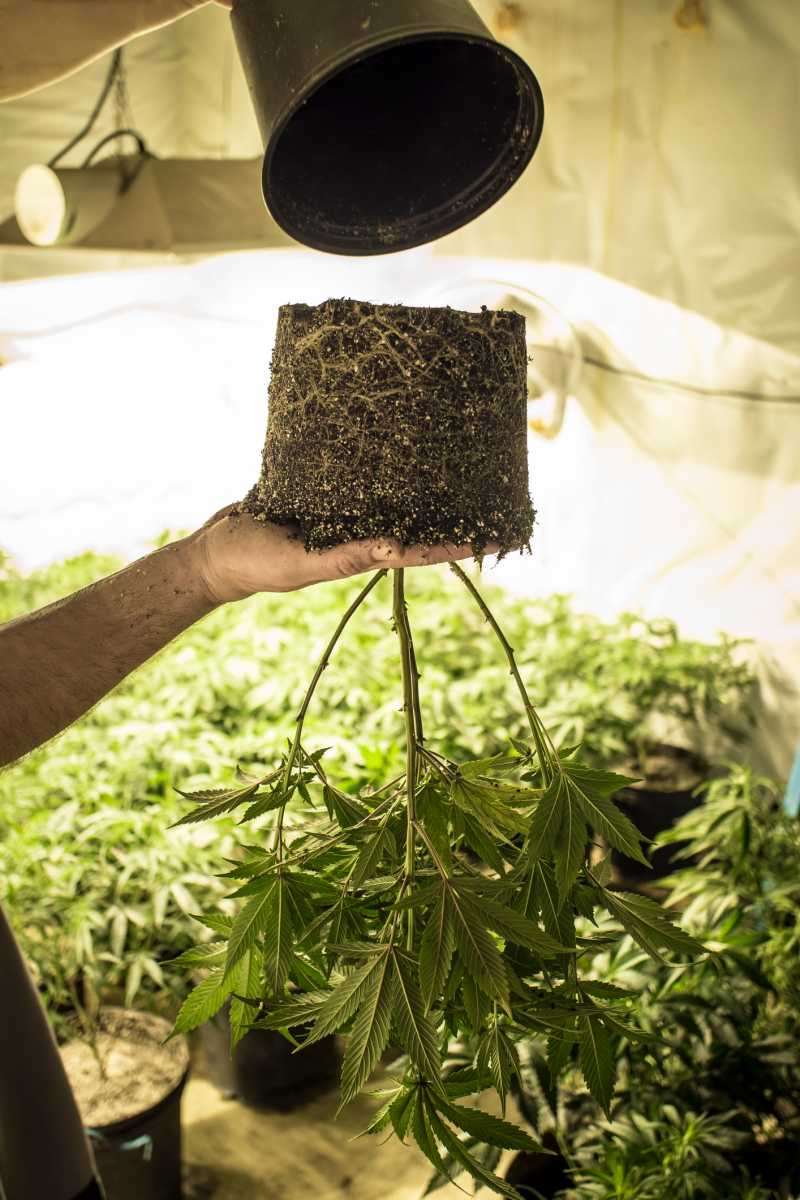Boiling cannabis roots in water might seem a far-fetched, fictitious practice with zero grounding in science, but some growers swear by its effectiveness at potentiating your buds.
If you’re reading, then most probably you’re ready to try it if it holds the promise of the dank, cannabinoid-rich sticky icky!
(This article contains affiliate links, if you buy through them, we’ll earn a commission at no extra cost to you)
Like most potency enhancing practices, boiling cannabis roots is shrouded in a bit of mystery.
Fact is, even to the experienced growers, connecting boiled roots to THC potency and general higher buds quality needs a little scratching and searching.
Let’s dig deeper into this subject and make the little mysterious ways of a few growers known to the masses, shall we?
Does Boiling Cannabis Roots During Harvest Increase Your Bud’s Potency?
Boiling cannabis roots during harvesting improves your buds’ potency and overall quality because it slows down the drying process. When you boil cannabis roots, it shocks the plant, closing the stomata on the leaves. This prevents massive moisture loss through the leaves, leaving only the floral clusters actively losing moisture at a slow pace.
Robert Connell Clark delves deeply into the subject of boiling roots after harvest in his book, Cannabis Cultivation: An advanced: The Propagation and Breeding of Distinctive Cannabis, the only book I found with convincing information about the subject.
How you handle your plants after harvesting directly impacts the quality of the buds you harvest. And one of the easiest ways to harm your buds is fast drying.
Boiling the roots saves you from this problem. It forces the plant to close the stomata.
Furthermore, when you hang dry the whole plant, the leaves cover the floral clusters, limiting moisture loss and protecting the resin glands from physical damage during handling.
This usually happens, even when you don’t boil the roots. It’s why hang-drying is so popular.
But boiling the roots takes the step further because the whole plant depends on the floral clusters to lose water and not the leaves— the water is only lost through the buds— that’s painfully slow but the perfect recipe for high-quality, potent buds.

Why Most ‘Gurus’ Are Wrong About Boiling Cannabis Roots During Harvest
Boiling cannabis roots, like all potency/yield-enhancing practices, comes with a share of myths.
The one far-spread myth about boiling roots is that it forces the resins and cannabinoids in the vascular system to move to the buds— a classic lie! Here’s why;
There’s No Resin Worth Harvesting In The Vascular System Of The Plant After Harvest
The plant secretes the resins into the glandular trichomes heads. The resins are always abundant in the glandular trichome heads— that’s where you take them— isn’t that why we cultivators only care about the buds?
After harvest, all the goodness you can take from the weed plant is in the buds.
Unless you have other medicinal uses for the plant matter, the plant’s vascular system won’t have anything resinous worth the hassle of boiling roots!
Once Secreted, Resins Aren’t Water-Soluble
The myth that resins can flow from the vascular system to the buds when the roots are boiled falls flat in the face of science. Resins aren’t water-soluble once matured and secreted.
Thus, once harvested, boiling the cannabis roots and turning the plant upside down won’t make gravity pull the cannabinoids to the buds.
Even if, by some miracle, the plant had an astonishing amount of cannabinoids in the vascular system, boiling the roots won’t increase the number of resins in the buds. It just doesn’t happen like that.
Benefits Of Slow Drying Cannabis
Every grower who wants to harvest quality buds must take care of the buds well after harvest.
Robert ConnellClark warns that nothing hurts your harvest than poor post-harvest care. Here are reasons why you want the buds to dry slowly;
Slow Drying Allows Enough Time For Chlorophyll Breakdown
Chlorophyll is good for the plant but not for you. When you harvest the buds, even after you flush them, they’re still filled with chlorophyll.
Freshly cut buds are greener than dried buds because they still contain loads of chlorophyll.
However, when rushed through the drying process, the buds dry but retain some chlorophyll, and when you smoke it, you get the canna coughs.
Chlorophyll-filled buds are smokable, but they aren’t clean.
Slow drying gives the buds enough time and favorable conditions to lose the chlorophyll and sugars, giving you a smoother smoke— no canna coughs!
Slow Drying Improves The Weed’s Aroma And Taste
The bud’s aroma and flavor are key factors that determine quality. Terpenes are responsible for the weed’s aroma and flavor.
Unfortunately, terpenes are very volatile compounds. They get depleted when exposed to the harsh temperatures of quick-drying methods, like microwaving or putting the buds closer to a high-intensity light.
Slow drying helps you dry your cannabis at safe temperatures for the terpenes. Thus you get higher quality buds when you retain the terpenes.
I wrote this article some time back, and it delves deeply into the intricates and benefits of slow drying.
How To Boil Cannabis Roots During Harvesting
There’s no specific formula for boiling the roots. It’s just boiling the roots, nothing out of the ordinary. Here’s a simple step-by-step process to boil cannabis roots during harvest for utmost potency;
Step 1: Detach the roots from the substrate without spoiling them. Some will break from the root ball but retain as many roots as possible. Note that the technique is only helpful when you leave the roots attached to the plants when you boil them.
Step 2: Soak the roots into boiled water for about 45 seconds. The water should be hot, bubbling hot, if you may.
Step 3. Hang dry the plants while still attached to the roots and let them dry until you can cure them.
Note: Since the shock from ‘cooked’ roots closes the stomata on the leaves and slows down the drying process, you will need to give your plants more days to be dry enough for the curing jars.
In conclusion, boiling the roots might not seem familiar, but some cultivators swear by its effectiveness.
It doesn’t work as most people think. Resins aren’t water-soluble and thus can’t be moved from one part of the plant to the next once the plant is harvested, but the slow drying trick— closing the stomata by boiling the roots will improve your buds’ quality massively.
It makes sense to reduce the rate of water loss through the leaves because cannabis, like wine, likes to take its time to mature.
While maturing in curing has immense effects on your bud’s quality, you can only get something good when you usher slow-dried buds into the curing jars.
Hastily dried buds often lose their spicy aroma and much of the cannabinoids in the drying phase.
External References:

